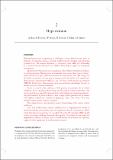Files in this item
Hypertension
Item metadata
| dc.contributor.author | Han, Alice | |
| dc.contributor.author | Helewa, Michael | |
| dc.contributor.author | Stones, William | |
| dc.contributor.author | Nathan, Hannah | |
| dc.contributor.author | Miller, Suellen | |
| dc.contributor.author | Magee, Laura A | |
| dc.contributor.editor | Magee, Laura A | |
| dc.contributor.editor | von Dadelszen, Peter | |
| dc.contributor.editor | Stones, William | |
| dc.contributor.editor | Mathai, Matthews | |
| dc.date.accessioned | 2016-08-09T12:33:05Z | |
| dc.date.available | 2016-08-09T12:33:05Z | |
| dc.date.issued | 2016 | |
| dc.identifier | 243584902 | |
| dc.identifier | fcdbdd0f-f65d-45c1-9a55-3f52c91f75ef | |
| dc.identifier.citation | Han , A , Helewa , M , Stones , W , Nathan , H , Miller , S & Magee , L A 2016 , Hypertension . in L A Magee , P von Dadelszen , W Stones & M Mathai (eds) , The FIGO Textbook of Pregnancy Hypertension : An evidence-based guide to monitoring, prevention and management . The Global Library of Women’s Medicine , London , pp. 1-18 . < http://www.glowm.com/pdf/NEW-Pregnancy_Hypertension-Final.pdf#page=19 > | en |
| dc.identifier.isbn | 9780992754556 | |
| dc.identifier.uri | https://hdl.handle.net/10023/9279 | |
| dc.description.abstract | Defining hypertension in pregnancy is challenging because blood pressure levels in pregnancy are dynamic, having a circadian rhythm and also changing with advancing gestational age. The accepted definition is a sustained systolic (sBP) of ≥140 mmHg or a sustained diastolic blood pressure (dBP) ≥90 mmHg, by office (or in-hospital) measurement. Measurement of blood pressure in pregnancy should follow standardised methods, as outside pregnancy. Blood pressure measurement may occur in three types of settings, which will dictate in part, which measurement device(s) will be used. The settings are (1) health care facility; and two types of settings outside the facility: (2) ‘ambulatory’ blood pressure measurement (ABPM); and (3) home blood pressure measurement (HBPM). Furthermore, blood pressure can be measured using auscultatory (mercury or aneroid devices) or automated methods. Factors to consider when selecting a blood pressure measurement device include validation, disease specificity, observer error and the need for regular recalibration. The accuracy of a device is repeatedly compared to two calibrated mercury sphygmomanometers (the gold standard), by trained observers, over a range of blood pressures and for women with different hypertensive disorders of pregnancy; only a few devices have been validated among women with pre-eclampsia. This chapter discusses the advantages and/or disadvantages of the various settings and devices. Low- and middle-income countries (LMICs) bear a disproportionate burden of maternal morbidity and mortality from the hypertensive disorders of pregnancy. While regular blood pressure monitoring can cost-effectively reduce this disparity, LMIC-health systems face unique challenges that reduce this capacity. Assessment of service gaps and programmatic responses to ensure access to blood pressure measurement are a priority, supported where appropriate by implementation research. | |
| dc.format.extent | 852671 | |
| dc.language.iso | eng | |
| dc.publisher | The Global Library of Women’s Medicine | |
| dc.relation.ispartof | The FIGO Textbook of Pregnancy Hypertension | en |
| dc.subject | RG Gynecology and obstetrics | en |
| dc.subject.lcc | RG | en |
| dc.title | Hypertension | en |
| dc.type | Book item | en |
| dc.contributor.institution | University of St Andrews. School of Medicine | en |
| dc.contributor.institution | University of St Andrews. Global Health Implementation Group | en |
| dc.identifier.url | http://www.glowm.com/pdf/NEW-Pregnancy_Hypertension-Final.pdf#page=19 | en |
This item appears in the following Collection(s)
Items in the St Andrews Research Repository are protected by copyright, with all rights reserved, unless otherwise indicated.

